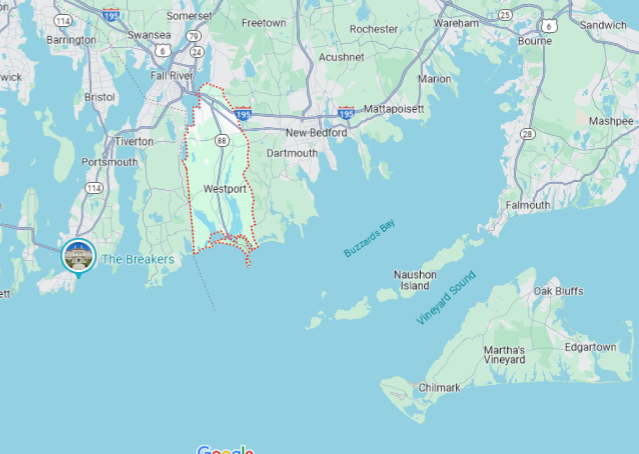After Blade Failure, East Coast Communities Awaking to Realities of “Green Energy” Dreams

After a wind turbine blade failed due to a manufacturing flaw near Nantucket, the massive Vineyard Wind facility was closed, and the city was poised to sue. Nantucket’s iconic beaches were cluttered with sharp fiberglass shards, a sub-optimum condition at the height of the summer tourist season.
Debris from the downed blade continues to wash ashore, this time impacting Westport, Massachusetts….and potentially more is on its way to Rhode Island.
Vineyard Wind Spokesperson Craig Gilvarg told 12 News they received a report of debris on Knubble Beach and confirmed its from the damaged blade.“The amount of debris is very limited and is primarily pieces of foam measuring less than one foot in size,” Gilvarg said. “We have received additional reports of debris in the area of Horseneck Beach and Westport Town Beach and are responding to them.”Westport Town Administrator James Hartnet told 12 News a Vineyard Wind representative said the company collected about four pounds of debris from “The Knubble” (Westport Harbor).Vineyard Wind also received reports of potential debris sightings in Little Compton. The Rhode Island Department of Environmental Management said it was thrown away before they could get their hands on it.
East Coast communities are now awakening from “green energy” dreams as the magnitude of the failure and the consequences of its environmental impact are realized.
Long Island officials are now asking Equinor (a Norway-based energy conglomerate) what contingency plans it has for its Empire Wind facility if a similar failure occurs.
“This only adds to the myriad concerns already expressed about the development of offshore wind,” said Brendan Finn, president of the Long Beach City Council. “I’m not against offshore wind, but this event shows how detrimental these projects can be to beach communities. There’s no reason these turbines need to be built so close to communities that depend on their beaches.”Long Beach City Manager Daniel Creighton said the city has “not heard a thing from Equinor, unfortunately” about the blade accident, and said he’d like to know “what their remediation plan would be if a similar event happened on their project since our beaches are a major source of revenue for the city. You can be certain that this administration would seek to recover all costs and lost revenue if something like that happened here.”Hal Riskin, a member of a Long Beach group that already had organized against Empire Wind, said the Vineyard incident raises alarms even higher.”I’m definitely worried about it,” Riskin said. “We have 1 million people here. It’s going to be a nightmare” if a blade snaps in a hurricane or a construction accident.
I suspect that the green energy company will be less than completely responsive to the Long Island officials’ newly voiced concerns. Like Vineyard Farms’ representatives, platitudes and assurances will be given. But exactly how much will be real?
While on the subject of Equinor, I would like to recommend a fabulous piece written by energy expert Robert Bryce. He noted that The NGOs have been shameless in their collusion with foreign corporations, including Equinor, which are collecting billions in federal tax credits to construct wind projects.
But more importantly, Bryce examines the green energy realities based on the science of physics.
…Big Wind is facing a crisis caused by simple physics. The turbines now being deployed onshore and offshore are failing far sooner than expected. Why? They have gotten too big.Yes, bigger wind turbines are more efficient than their smaller cousins. But the larger the turbine, the more its components get hit by the stresses that come with their size and weight.The GE Vernova Haliade-X wind turbine used at Vineyard Wind stands 260 meters high and sweeps an area of 38,000 square meters. That means the turbine captures wind energy over an area five times larger than a soccer pitch.But here’s the critical part: its blades are 107 meters (351 feet) long and weigh 70 tons. In addition, the rotor of the massive machine spans 220 meters. For comparison, the wingspan of a Boeing 737 is 34 meters.In other words, the turbines at Vineyard Wind are nearly as tall as the Eiffel Tower and each of their blades weighs more than a fully loaded 737. piece has an eye-opening piece on the physics associated with the massive wind projects that touches upon blade size.
Bryce also interviewed Bob DeCosta, a fisherman who sails this area, and had a few observations about chemistry and meteorology.
I know a thing or two about the saltwater environment. I can’t imagine what it will take to keep these things running in salt water.”When asked about the damage a hurricane would do to the turbines, he said, “We will be picking up the pieces from this on the beaches at Nantucket for the next 20 years.”
The blade failure that occurred on a calm summer day may be a blessing in disguise. It may dissuade communities from being steamrolled by “experts” and agreeing to massive wind farms that will collapse under hurricane-force winds, creating debris fields of sharps that will ruin beaches for decades.
CLICK HERE FOR FULL VERSION OF THIS STORY